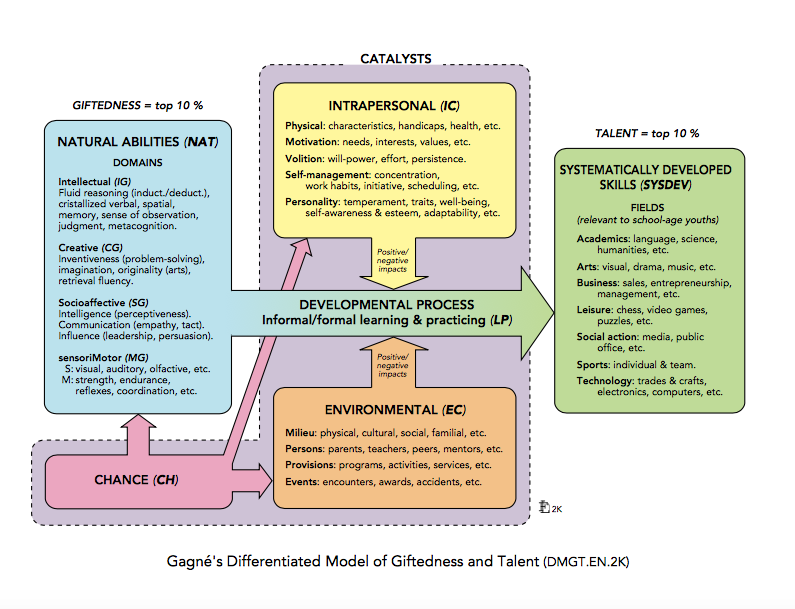33
Defining giftedness is not easy and still today there is not one definition which is consistently used to describe Gifted and Talented Students. The first and most common model is Renzulli’s Three-Ring Conception of Giftedness.
Renzulli’s Three- Ring Conception of Giftedness
Gifted Behaviour
Within his three-ring model, Renzulli acknowledges three important characteristics which should be visible for a child to be considered as gifted and talented: above average ability, creativity, and task commitment. Together, these three aspects result in giftedness.

By using the phrase above average abilities, he differed between two abilities: the specific abilities and the general abilities. Specific abilities refer to the capacity to acquire knowledge and the performance of an activity. General abilities refer to the processing of information, integrating experiences and abstract thinking. Within creativity Renzulli points out the fluency, flexibility, and originality in the
thinking of a student. Moreover, there are the aspects of being openminded to experiences, sensitivity to stimulations, and being a risk taker. Furthermore, under task commitment Renzulli underlines the motivation a student has towards taking action like perseverance, endurance, and hard work, but also self-control perspectives and a special fascination towards specific things or topics. Renzulli points out that without task commitments, there is no gifted behavior visible. Lastly, Renzulli makes it the utmost importance that all three rings need to cooperate in order to be noticed as a student with a gifted behavior (Renzulli & Reis, 1997).
For more information on this model, go to the Brainwaves Video Anthology and watch Renzulli explain his ideas.
Gagne’s Differentiated Model of Giftedness and Talent
The focus of Gagne’s model is on the differentiation between the two words gifts, like natural abilities, and talents, which is defined as systematically developed from gifts. 
Gagne believes that all talents are gained from natural abilities. He thinks that learning appears through inner and outer stimuluses. There are six main factor he defines in his study:
- Natural abilitiies: intellectual, creative, socio-affective and sensory-motor.
- Talent developed in youth, e.g., academic, arts, social, sports, technology
- Developmental processes: formal and informal learning experiences
- Intrapersonal Catalysts: physical health, motivation, self-regulation, personality
- Environmental Catalyiists: culture, family, experiences, systems of support (food, shelter, etc.)
- Chance
